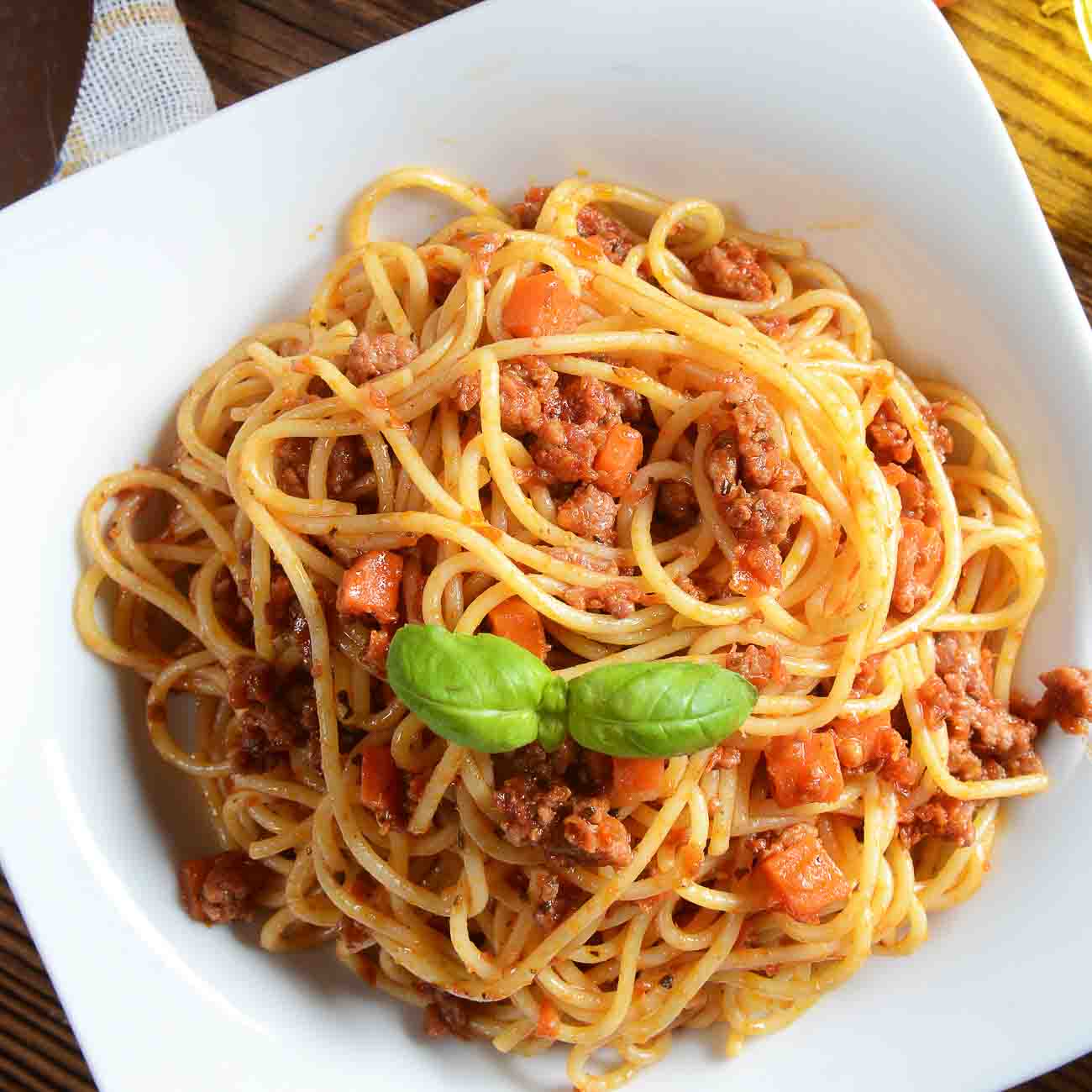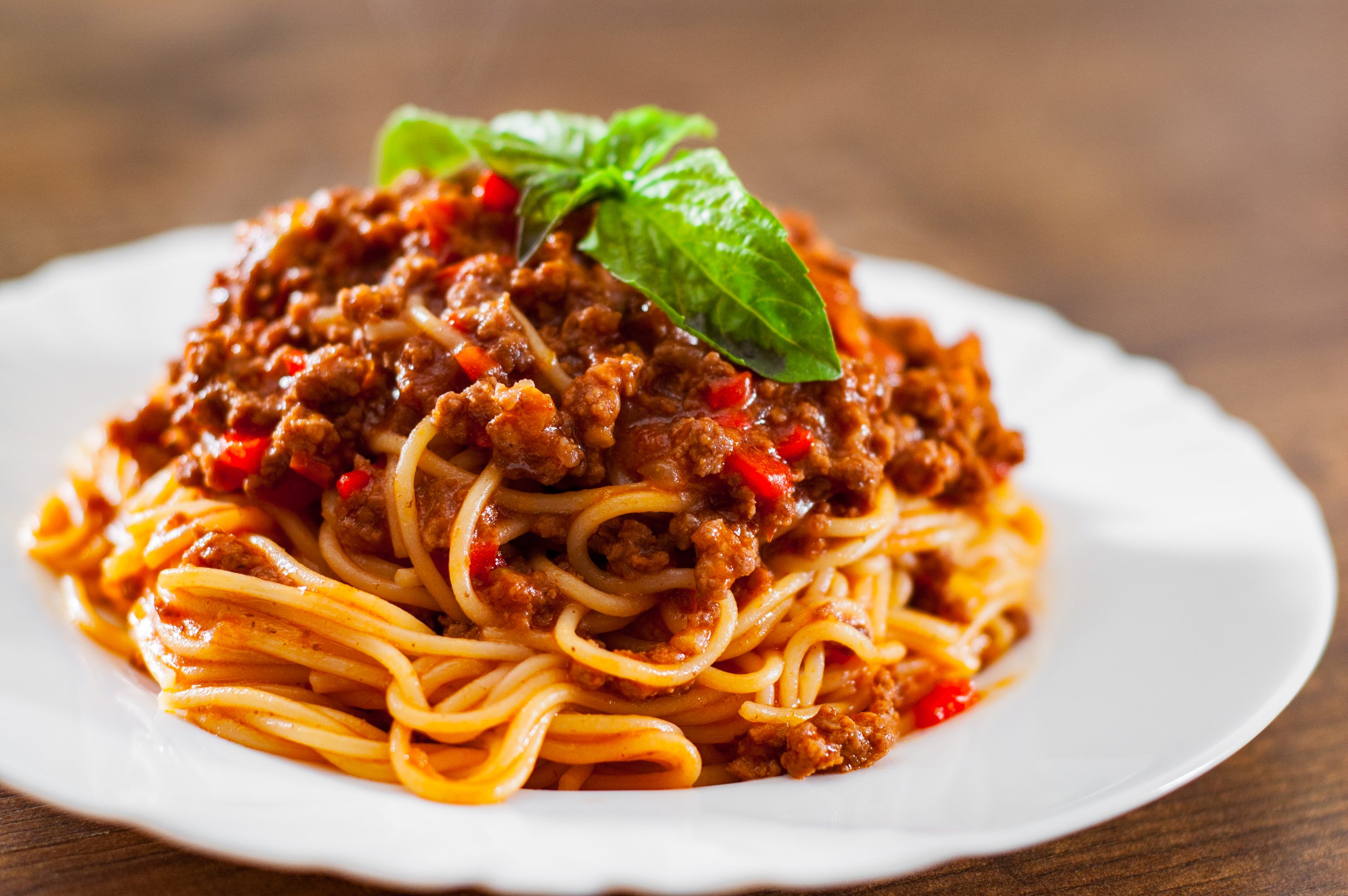Spaghetti Bolognese, a classic dish originating from the heart of Italy, has captured the taste buds of food enthusiasts worldwide. Its rich and flavorful sauce, combined with perfectly cooked spaghetti, creates a symphony of flavors that is both comforting and satisfying.
In this comprehensive guide, we will delve into the traditional recipe, exploring its history, ingredients, and cooking techniques. We will also discover variations, accompaniments, and presentation tips to help you create an authentic and unforgettable Spaghetti Bolognese experience.
This culinary journey will provide you with the knowledge and inspiration to master this beloved dish. Whether you are a seasoned chef or a home cook eager to expand your culinary repertoire, this guide will equip you with the essential techniques and insights to create a traditional Spaghetti Bolognese that will impress your family and friends.
Introduction
Spaghetti Bolognese is a classic Italian dish that has gained worldwide popularity. Originating from the city of Bologna, it is a hearty and flavorful pasta dish that is often served as a main course.The origins of Spaghetti Bolognese can be traced back to the Middle Ages, when it was a popular dish among the wealthy and noble families of Bologna.
Over time, the recipe spread throughout Italy and eventually became a staple of Italian cuisine.
Ingredients
The foundation of a traditional spaghetti bolognese lies in the careful selection of its ingredients. High-quality ingredients not only elevate the flavor but also ensure a rich and authentic taste experience.
Essential ingredients for spaghetti bolognese include:
- Spaghetti: Use high-quality dried spaghetti made from durum wheat semolina for the perfect al dente texture.
- Ground beef: Opt for a combination of lean and fatty ground beef to achieve a balanced flavor and juicy texture.
- Onion: Yellow or white onions provide a sweet and aromatic base for the sauce.
- Carrots: Carrots add natural sweetness and a vibrant color to the dish.
- Celery: Celery stalks bring a subtle celery flavor and texture to the sauce.
- Tomatoes: Use a combination of canned crushed tomatoes and tomato paste for a rich and flavorful tomato base.
- Red wine: A splash of red wine adds depth and complexity to the sauce.
- Beef broth: Beef broth enhances the savory flavors and adds moisture to the sauce.
- Spices: A blend of Italian herbs such as basil, oregano, and thyme, along with garlic and bay leaves, provides aromatic depth to the dish.
Fresh vs. Dried Pasta
While fresh pasta can provide a more delicate texture, dried spaghetti is the traditional choice for bolognese. Its slightly porous surface allows it to absorb the flavors of the sauce more effectively, resulting in a more flavorful dish.
Preparation
The preparation of a traditional spaghetti bolognese recipe involves several steps, including browning the meat, sautéing the vegetables, and simmering the sauce. Each step is crucial to developing the rich and flavorful sauce that characterizes this classic Italian dish.
The first step is to brown the ground beef and pork in a large pot or Dutch oven over medium heat. Once the meat is browned, drain off any excess fat. Then, add the chopped onion, carrot, and celery to the pot and sauté until they are softened.
Simmering the Sauce
Next, add the tomato paste to the pot and cook for a few minutes, stirring constantly. Then, add the crushed tomatoes, beef broth, and red wine. Bring the sauce to a simmer and cook for at least 2 hours, or up to 4 hours, stirring occasionally.
The longer the sauce simmers, the more flavorful it will become.
Cooking Techniques
The preparation of a traditional spaghetti bolognese recipe involves several fundamental cooking techniques that work together to enhance the flavor and depth of the dish.
These techniques include braising, deglazing, and reducing, each playing a specific role in developing the rich and satisfying flavors characteristic of this classic Italian dish.
Braising
Braising is a cooking method that combines searing and slow cooking in a covered pot with a small amount of liquid. In the context of spaghetti bolognese, the meat (typically ground beef and pork) is first browned in a pan to develop color and flavor.
It is then transferred to a braising pot with aromatic vegetables, such as onions, carrots, and celery, and cooked in a flavorful liquid, such as beef broth or red wine, over low heat for an extended period.
Braising allows the meat to become tender and fall apart while absorbing the flavors of the surrounding liquid and vegetables. The slow cooking process also helps to break down the connective tissues in the meat, resulting in a rich and flavorful sauce.
Deglazing
Deglazing is a technique used to extract flavorful caramelized bits from the bottom of a pan after searing or browning. In the preparation of spaghetti bolognese, after the meat has been browned, white wine or red wine is added to the pan and brought to a boil.
The liquid dissolves the caramelized bits, creating a flavorful liquid that is then incorporated into the sauce.
Deglazing adds depth and complexity to the sauce, enhancing its overall flavor profile.
Reducing
Reducing is a cooking technique that involves simmering a liquid until it thickens and intensifies in flavor. In the case of spaghetti bolognese, the sauce is simmered for an extended period, allowing the flavors to meld and concentrate. As the sauce reduces, the water content evaporates, leaving behind a thicker, more flavorful sauce that coats the pasta perfectly.
Variations

The classic spaghetti bolognese recipe is a culinary masterpiece, but it also has a wealth of variations that explore different flavors and ingredients. These variations can range from regional interpretations to modern twists, each adding a unique touch to the beloved dish.
The diversity of ingredients and techniques used in these variations creates a spectrum of flavor profiles. From the subtle nuances of regional variations to the bold innovations of modern interpretations, there’s a spaghetti bolognese variation to suit every palate.
Regional Variations
- Bolognese alla Bolognese (Traditional): The classic recipe from Bologna, Italy, using a combination of ground beef, pork, and veal, along with tomatoes, carrots, celery, and onions.
- Ragu alla Napoletana (Neapolitan): A variation from Naples that incorporates a rich tomato sauce, often with the addition of red wine and herbs.
- Pasta alla Norma (Sicilian): A Sicilian dish that features eggplant, tomatoes, and ricotta salata cheese, creating a vibrant and flavorful combination.
Modern Interpretations
- Vegetarian Bolognese: A plant-based variation that uses lentils, mushrooms, or tofu as a substitute for meat, creating a hearty and flavorful dish.
- Spicy Bolognese: A variation that incorporates chili peppers or other spices to add a touch of heat and complexity to the traditional recipe.
- Bolognese with Pancetta: A variation that adds pancetta or bacon to the meat mixture, adding a smoky and savory flavor to the sauce.
Accompaniments
Spaghetti bolognese, with its rich and hearty flavors, pairs well with a variety of traditional accompaniments that enhance its taste and texture.
These accompaniments complement the dish by adding contrasting flavors, textures, and aromas, creating a well-rounded and satisfying meal.
Grated Parmesan Cheese
Grated Parmesan cheese is a classic accompaniment to spaghetti bolognese, adding a salty, nutty flavor and a creamy texture. It melts slightly over the hot pasta, creating a rich and flavorful coating.
Freshly Ground Black Pepper
Freshly ground black pepper adds a touch of heat and spice to the dish, balancing out the richness of the sauce. It also enhances the earthy flavors of the meat and vegetables.
Red Wine
A glass of red wine, such as Chianti or Cabernet Sauvignon, is a traditional accompaniment to spaghetti bolognese. The wine’s tannins complement the acidity of the tomatoes and the bitterness of the vegetables, creating a harmonious flavor profile.
Presentation

The traditional presentation of spaghetti bolognese involves serving the pasta on a large platter or individual plates, topped with a generous portion of the rich and flavorful meat sauce. The dish is often garnished with freshly grated Parmesan cheese and chopped parsley to enhance its visual appeal and add an extra layer of flavor.
To further elevate the presentation, consider using a contrasting color for the garnish. For example, a sprinkling of bright green basil leaves or a drizzle of vibrant red chili oil can add a pop of color and make the dish more visually striking.
Additionally, serving the spaghetti bolognese in a shallow bowl or on a bed of sautéed vegetables can create a more elegant and inviting presentation.
Closure
As we conclude our exploration of the traditional Spaghetti Bolognese recipe, it is evident that this dish is more than just a meal; it is a culinary masterpiece that embodies the essence of Italian cuisine. Its rich history, authentic ingredients, and time-honored cooking techniques combine to create a dish that is both timeless and universally appealing.
Whether you choose to follow the traditional recipe or experiment with variations, the key to a successful Spaghetti Bolognese lies in using high-quality ingredients, mastering the cooking techniques, and presenting it with pride. Embrace the joy of cooking this classic dish, and savor every bite of its delicious and comforting flavors.
FAQ Summary
What is the origin of Spaghetti Bolognese?
Spaghetti Bolognese, also known as Ragu alla Bolognese, originated in the city of Bologna, Italy, during the Middle Ages. It is believed to have evolved from a similar dish called “maccheroni al sugo di carne” (macaroni with meat sauce), which was popular in the region.
What is the traditional cooking method for Spaghetti Bolognese?
The traditional cooking method for Spaghetti Bolognese involves browning ground beef and pork in a large pot or Dutch oven. Vegetables such as onions, carrots, and celery are then added and sautéed until softened. Red wine is deglazed into the pot, followed by the addition of tomatoes, tomato paste, and beef broth.
The sauce is then simmered for several hours, allowing the flavors to meld and develop.
What are some common variations of Spaghetti Bolognese?
There are many variations of Spaghetti Bolognese, both regional and modern. Some common variations include using different types of meat, such as ground lamb or veal, or adding vegetables such as mushrooms or bell peppers. Some modern interpretations may also include the use of cream or cheese in the sauce.
What are the traditional accompaniments for Spaghetti Bolognese?
Traditional accompaniments for Spaghetti Bolognese include grated Parmesan cheese, fresh basil, and a side of crusty bread to soak up the delicious sauce.
How can I make my Spaghetti Bolognese more flavorful?
To make your Spaghetti Bolognese more flavorful, use high-quality ingredients and allow the sauce to simmer for as long as possible. You can also add a splash of red wine or a touch of balsamic vinegar to enhance the depth of flavor.
